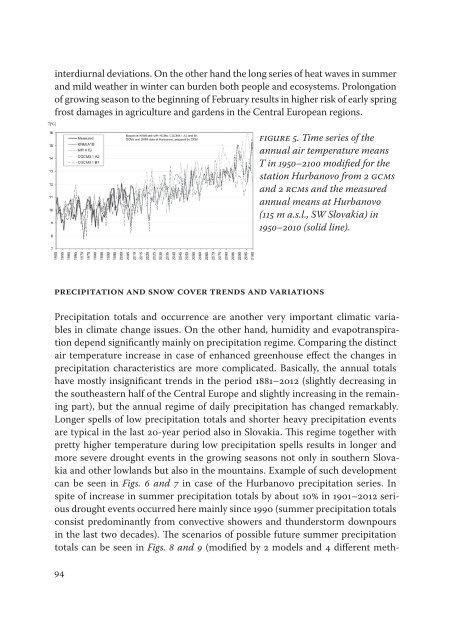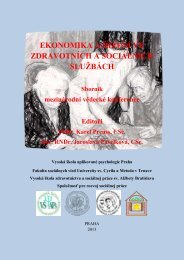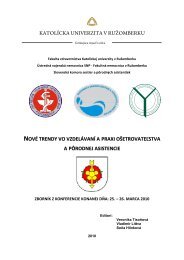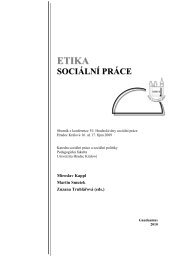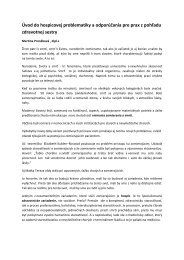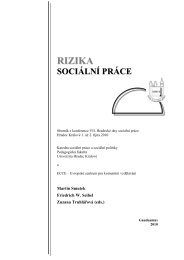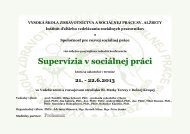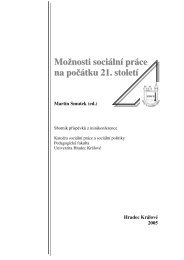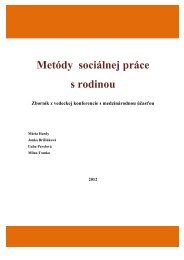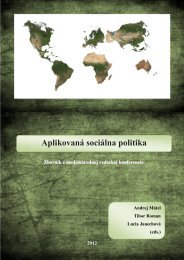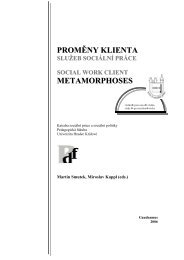Zmena klÃmy â možný dopad (nielen) na obyvateľstvo - Prohuman
Zmena klÃmy â možný dopad (nielen) na obyvateľstvo - Prohuman
Zmena klÃmy â možný dopad (nielen) na obyvateľstvo - Prohuman
You also want an ePaper? Increase the reach of your titles
YUMPU automatically turns print PDFs into web optimized ePapers that Google loves.
interdiur<strong>na</strong>l deviations. On the other hand the long series of heat waves in summer<br />
and mild weather in winter can burden both people and ecosystems. Prolongation<br />
of growing season to the beginning of February results in higher risk of early spring<br />
frost damages in agriculture and gardens in the Central European regions.<br />
Figure 5. Time series of the<br />
annual air temperature means<br />
T in 1950–2100 modified for the<br />
station Hurbanovo from 2 GCMs<br />
and 2 RCMs and the measured<br />
annual means at Hurbanovo<br />
(115 m a.s.l., SW Slovakia) in<br />
1950–2010 (solid line).<br />
PRECIPITATION AND SNOW COVER TRENDS AND VARIATIONS<br />
Precipitation totals and occurrence are another very important climatic variables<br />
in climate change issues. On the other hand, humidity and evapotranspiration<br />
depend significantly mainly on precipitation regime. Comparing the distinct<br />
air temperature increase in case of enhanced greenhouse effect the changes in<br />
precipitation characteristics are more complicated. Basically, the annual totals<br />
have mostly insignificant trends in the period 1881–2012 (slightly decreasing in<br />
the southeastern half of the Central Europe and slightly increasing in the remaining<br />
part), but the annual regime of daily precipitation has changed remarkably.<br />
Longer spells of low precipitation totals and shorter heavy precipitation events<br />
are typical in the last 20-year period also in Slovakia. This regime together with<br />
pretty higher temperature during low precipitation spells results in longer and<br />
more severe drought events in the growing seasons not only in southern Slovakia<br />
and other lowlands but also in the mountains. Example of such development<br />
can be seen in Figs. 6 and 7 in case of the Hurbanovo precipitation series. In<br />
spite of increase in summer precipitation totals by about 10% in 1901–2012 serious<br />
drought events occurred here mainly since 1990 (summer precipitation totals<br />
consist predomi<strong>na</strong>ntly from convective showers and thunderstorm downpours<br />
in the last two decades). The sce<strong>na</strong>rios of possible future summer precipitation<br />
totals can be seen in Figs. 8 and 9 (modified by 2 models and 4 different meth-<br />
94


